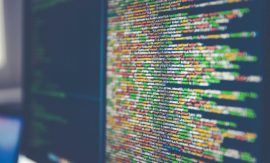Intended learning outcomes: Review factors that influence people’s acceptance of ERP software. Differentiate between standard and company-specific software. Describe basic issues of software for transcorporate planning & control.
Course section 9.6: Subsections and their intended learning outcomes

9.6 Scenarios and Exercises
Intended learning outcomes: Review factors that influence people’s acceptance of ERP software. Differentiate between standard and company-specific software. Describe basic issues of software for transcorporate planning & control.

9.6.1 Exercise: Factors That Influence People’s Acceptance of ERP Software
Intended learning outcomes: Describe for each area the factors that have the greatest effect on a person’s acceptance of ERP software.

9.6.2 Exercise: Standard or Company-Specific Software
Intended learning outcomes: Explain why a lot of company-specific software is still being produced in the field of ERP software.

9.6.3 Exercise: Software for Transcorporate Planning & Control
Intended learning outcomes: Evaluate the claim of some SCM software salespeople that SCM software at last solves the problems that ERP could not handle. Identify the real reasons for the success of SCM software implementations.
Course 9: Sections and their intended learning outcomes

Course 9 – ERP Software and SCM Software
Intended learning outcomes: Describe software used for logistics purposes. Explain contents of logistics software packages. Disclose factors for successful implementation of logistics software.

9.1 Software in the Area of ERP and SCM: An Introduction
Intended learning outcomes: Produce an overview on history and origin of ERP software. Disclose scope and range of ERP and SCM software.

9.2 Contents of ERP Software and SCM Software
Intended learning outcomes: Describe classical MRP II / ERP software. Present software for customer order production, for the process industry, for transcorporate planning & control in a supply chain, and for Customer Relationship Management (CRM). Differentiate between standard and company-specific software.

9.3 Factors for Successful Implementation of ERP Software and SCM Software
Intended learning outcomes: Explain possibilities and limitations of the IT support of planning & control. Disclose factors that influence individual acceptance and the range of implementation of ERP software.

9.4 Summary
.

9.5 Keywords
.

9.6 Scenarios and Exercises
Intended learning outcomes: Review factors that influence people’s acceptance of ERP software. Differentiate between standard and company-specific software. Describe basic issues of software for transcorporate planning & control.

9.7 References
.
